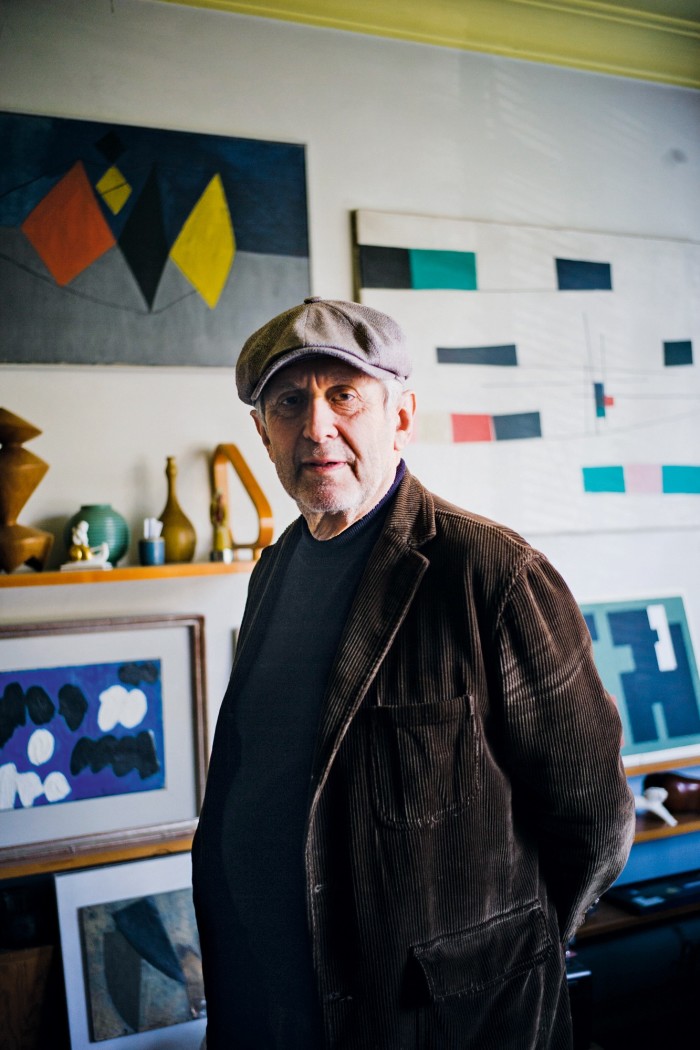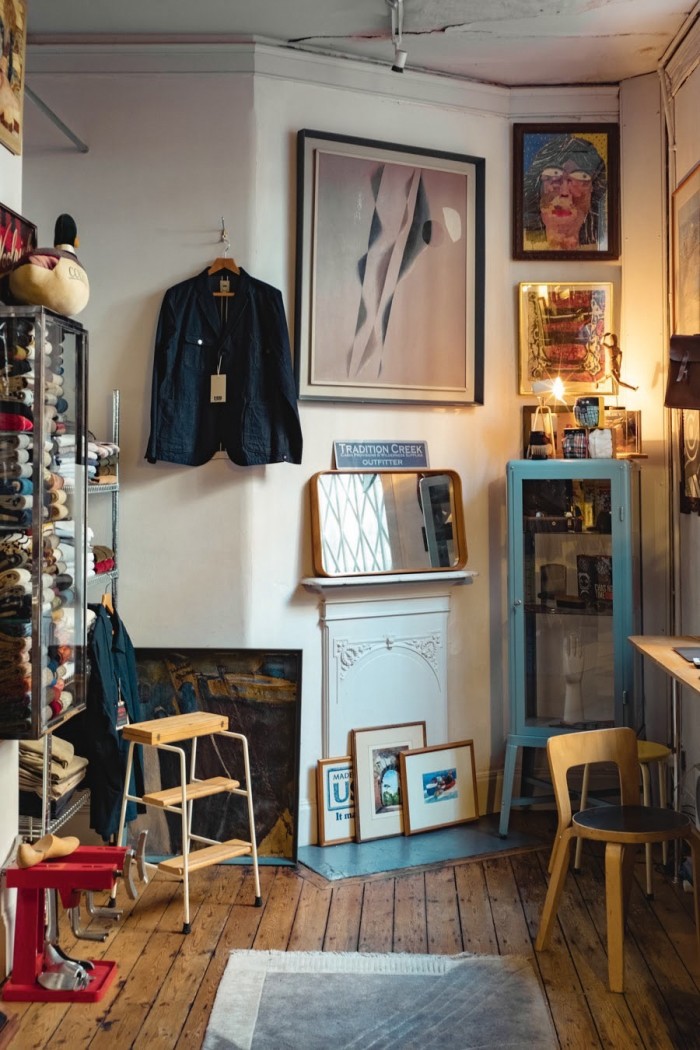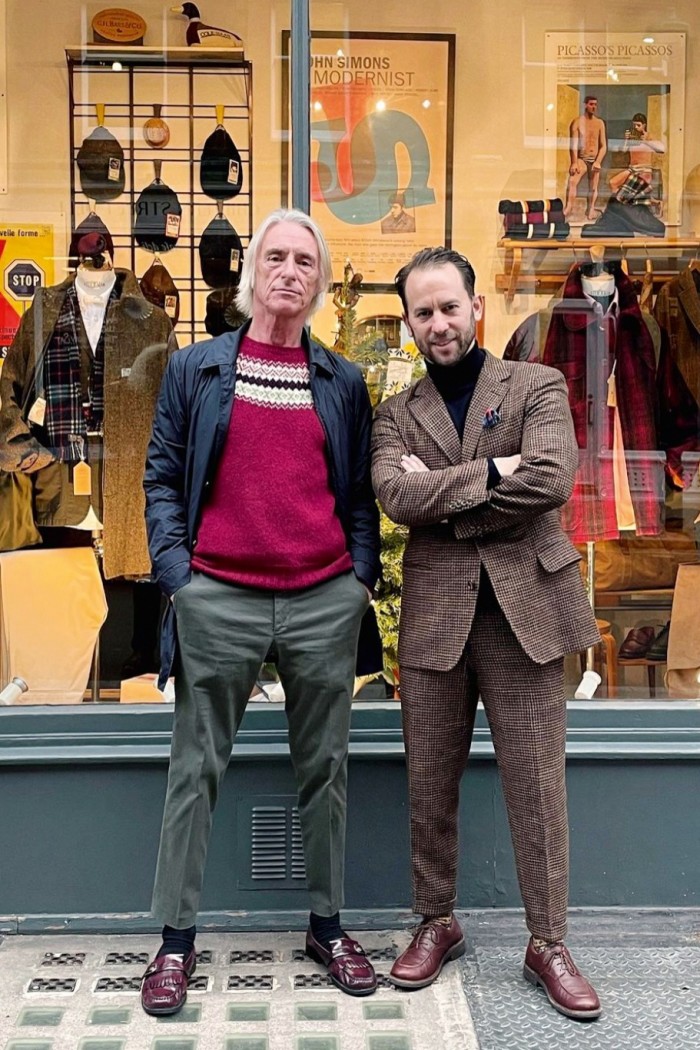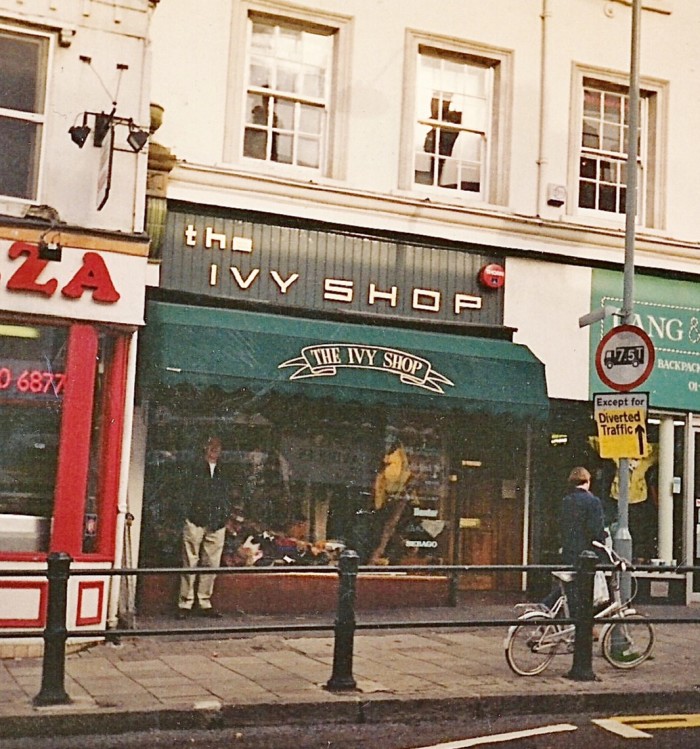Cult Shop: the home of Ivy League style in London

Simply sign up to the Style myFT Digest -- delivered directly to your inbox.
Soft-shouldered herringbone tweed jackets, Shetland crewneck jumpers, button-down shirts, chinos and loafers worn with white socks… The foundations of Ivy League style have hardly changed since it first appeared at the beginning of the 20th century. Pioneered by elite East Coast American students who desired clothing that could take them from the lecture hall to the sports field, it was later adopted by John F Kennedy, Steve McQueen and jazz musicians such as Miles Davis, crossing the Atlantic to Britain in the 1960s.


The man responsible for defining the British-Ivy look – more modish, with three-button jackets and gingham check – was John Simons, whose Chiltern Street store is still one of the most influential purveyors of the aesthetic. (Just recently it created a new, much in-demand collection of Shetland jumpers with Paul Weller, one of the store’s long-standing patrons.) Born to a family of clothes-makers in Hackney, Simons started out as a window-dresser in the West End before opening The Ivy Shop in 1964 in leafy Richmond-on-Thames. He made a name for himself with well-curated rails of genuine American stock and handwritten cards describing its origins, while the nickname “Harrington” he gave to bomber-style tartan-lined jackets – after the character Rodney Harrington in the soap opera Peyton Place – became the definitive term (he still sells his version for £350). His cult following allowed him to open under his own name in Covent Garden in the 1980s; and then in 2011 he moved to his current spot in Marylebone.


Inside, new and vintage clothing on mannequins sit with those handwritten cards still pegged to them. Back in the day most of the stock was imported from the States, but while the store still sells other brands, it now makes many of the clothes under its own label. House-designed tweed overcoats in black and ivory herringbone (£650), long corduroy overcoats in olive green (£495), and high-rise mottled brown herringbone tweed wool trousers (£179) line the walls, along with classic black calf-leather loafers (£320) and brass-buckled bridle leather belts (£120). (The Weller collaboration is only available online.) “Our Ivy Oxford cotton button-down shirts and our unique Overcoat, based on a style John wore in the ’60s, are our bestsellers,” says Paul Simons, John’s son, who runs the shop day to day. Sizing favours the masculine build, but this hasn’t stopped their designs becoming popular with women. “They are attracted to our timeless style,” he adds. “They like the silhouettes.”


Much as it deals in classics, the signature look changes, adapting and appropriating new elements such as workwear (which American students would not have worn on campus), silk scarves and panelled flat caps. “This is UK Ivy. No one else does it with the authenticity that we have in John Simons,” says Paul.

You can buy online, but it’s the atmosphere that keeps customers coming to the store. “The shop had been a printer’s and the floors were covered in black ink when we got the keys. It had a quirky feel that we were looking for,” says Paul. Today, he says, “the majority of our customers are from London, or make the trip from parts of the UK. Someone once came all the way from Thailand just to come to the shop.”
The interest in modern art (they sell a range of midcentury exhibition posters), a jazz soundtrack, or a famous face such as Weller, Martin Freeman or Guy Ritchie – all fans – are particular draws. As is John himself, when he pops in. In the 2018 documentary John Simons: A Modernist, producer David Rosen sums up Simons’ place in British style culture: “He’s the godfather. Simple as that.”
John Simons, 46 Chiltern St, London W1U 7QR; @johnsimons1955
Comments